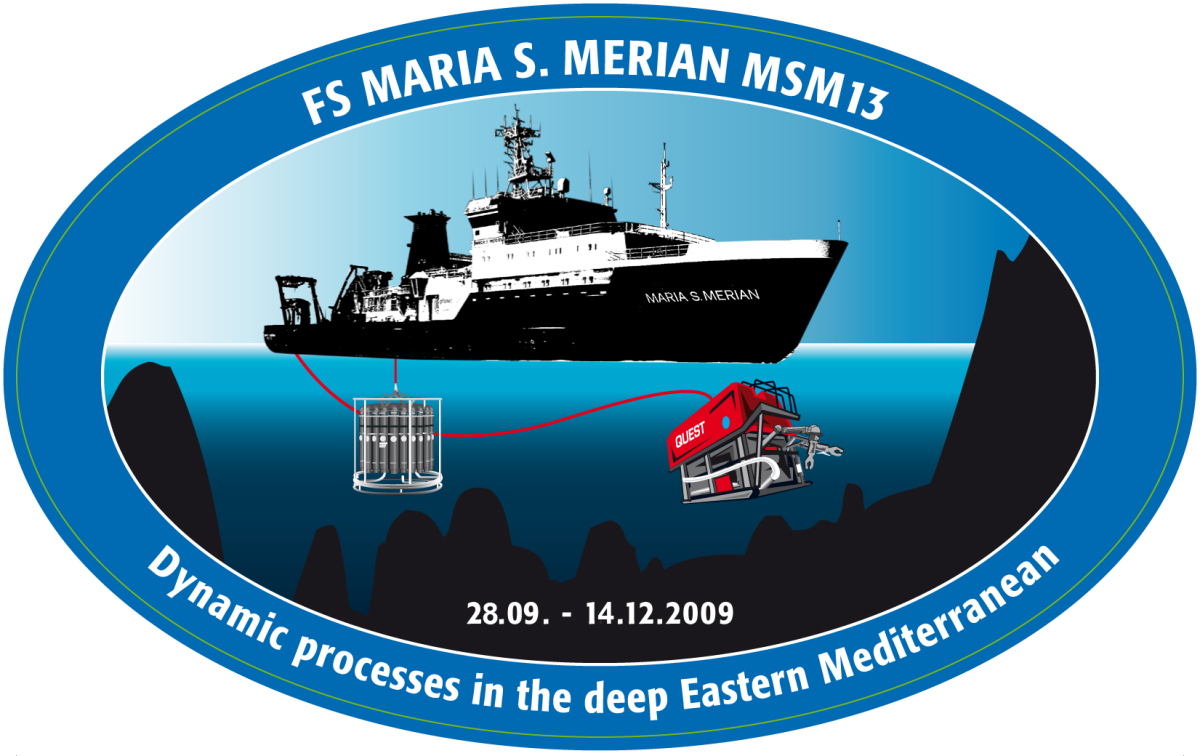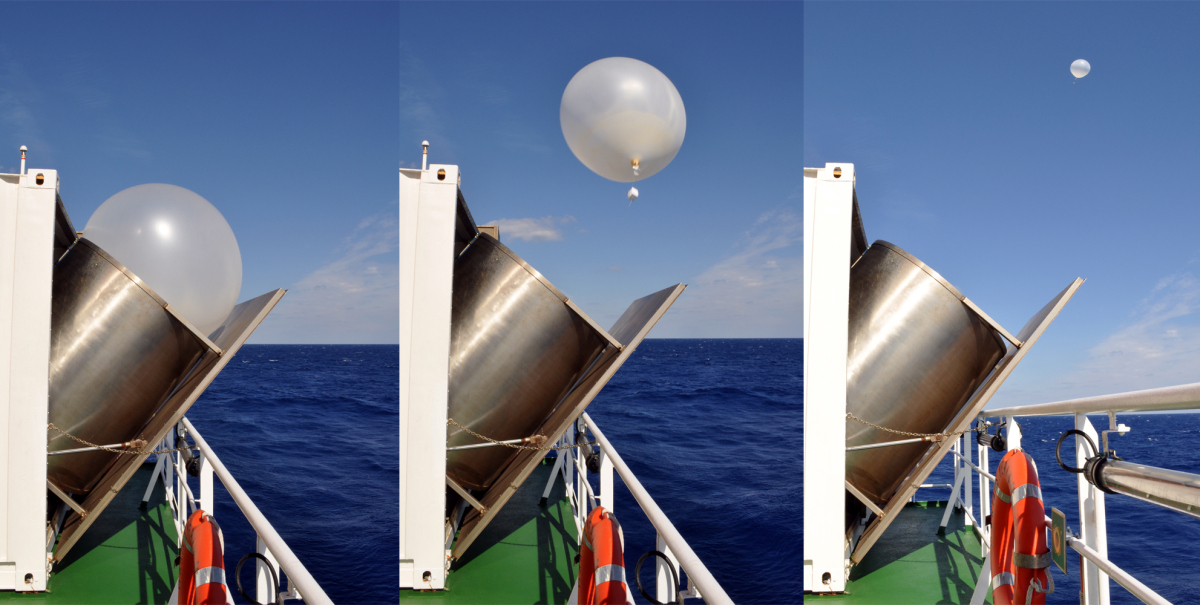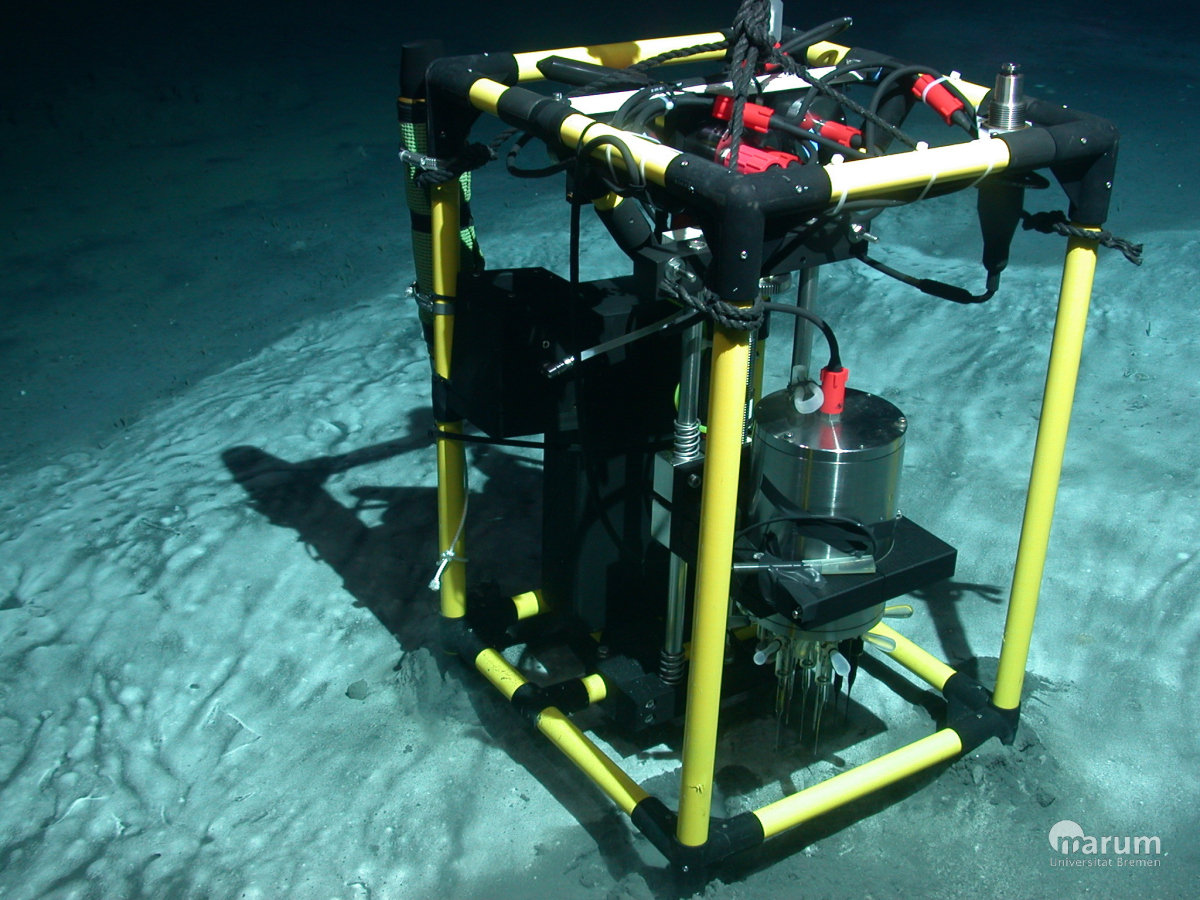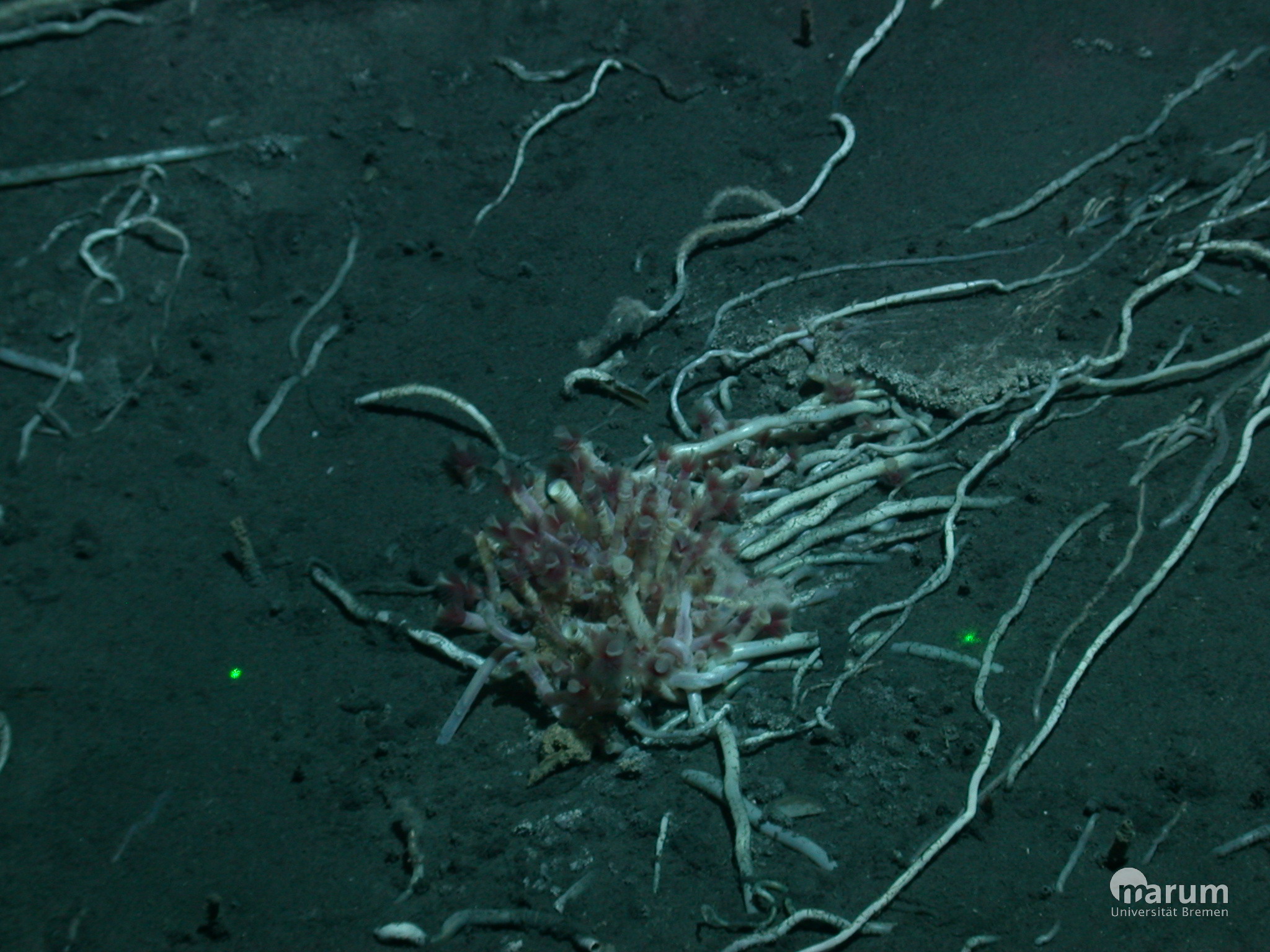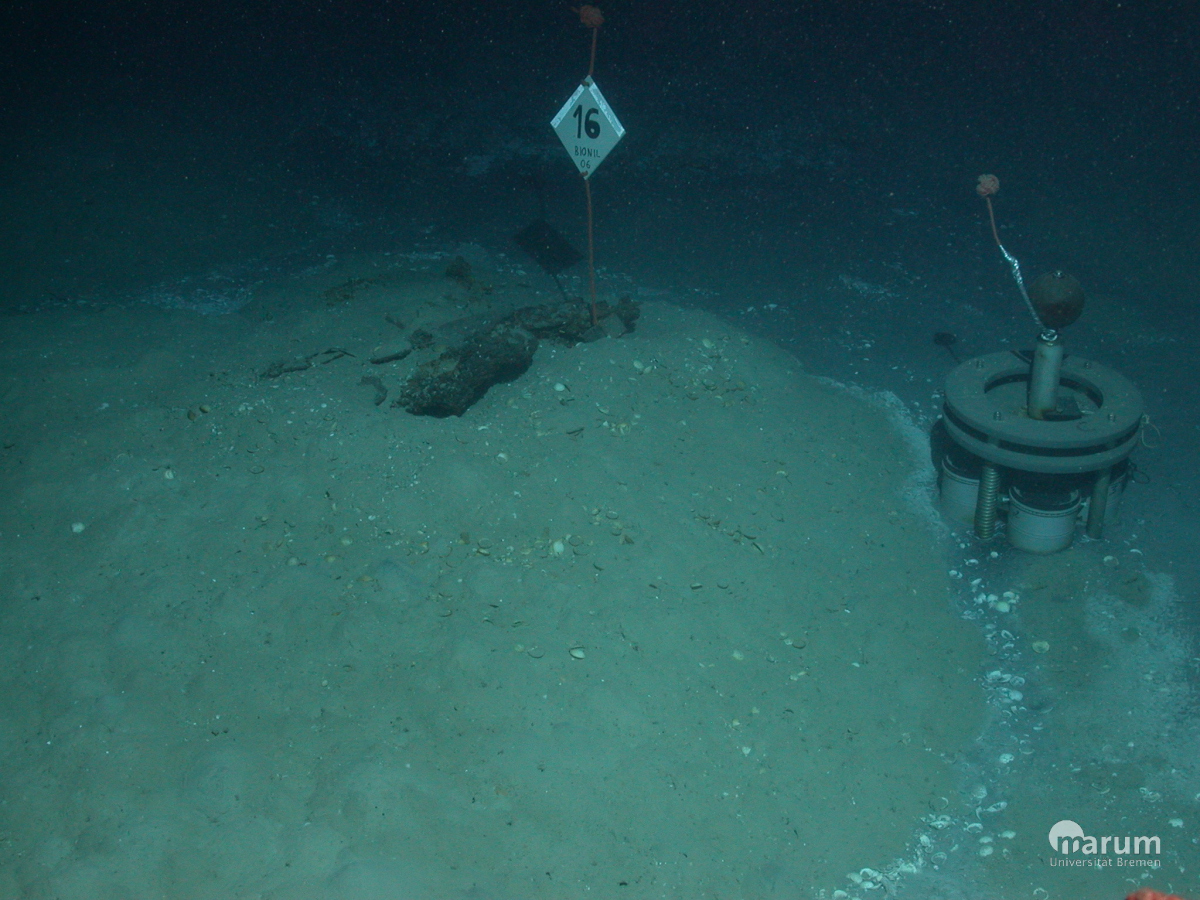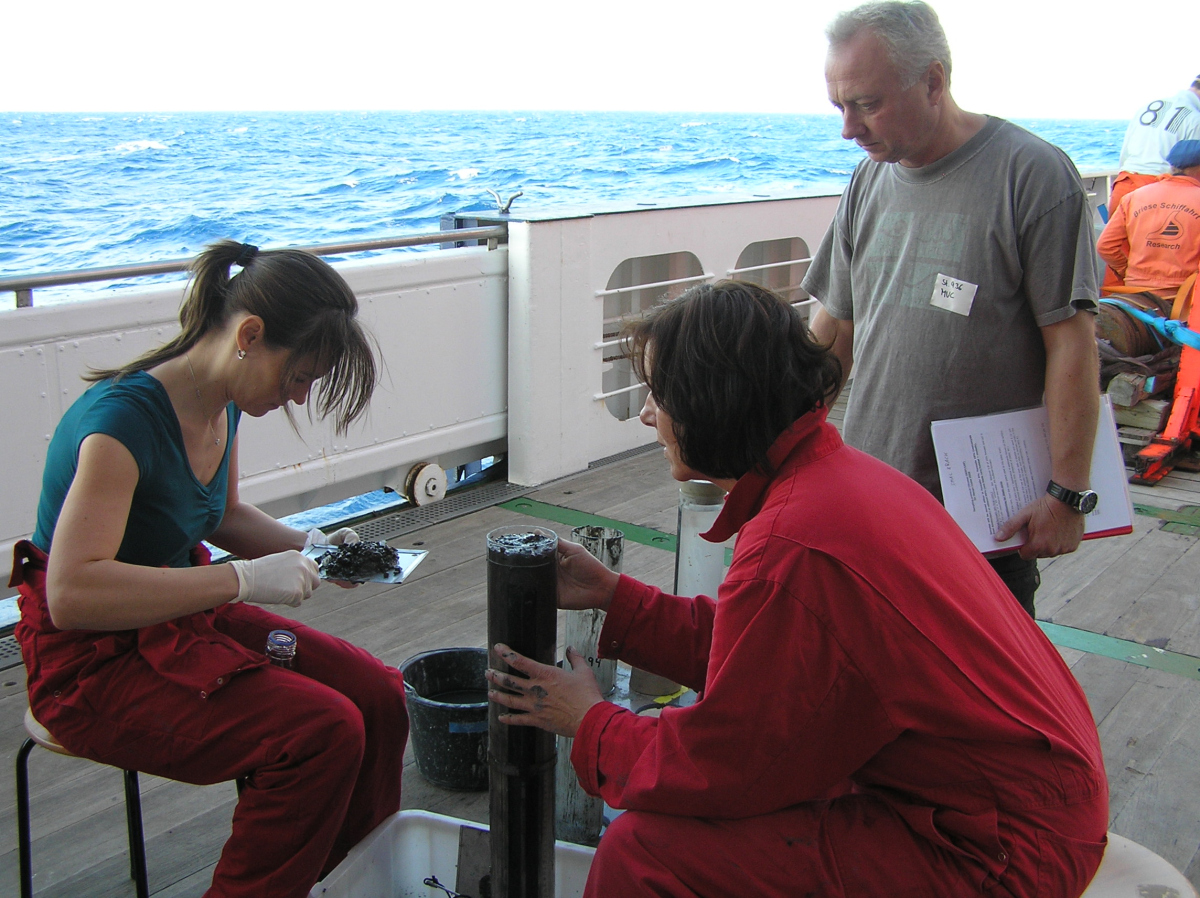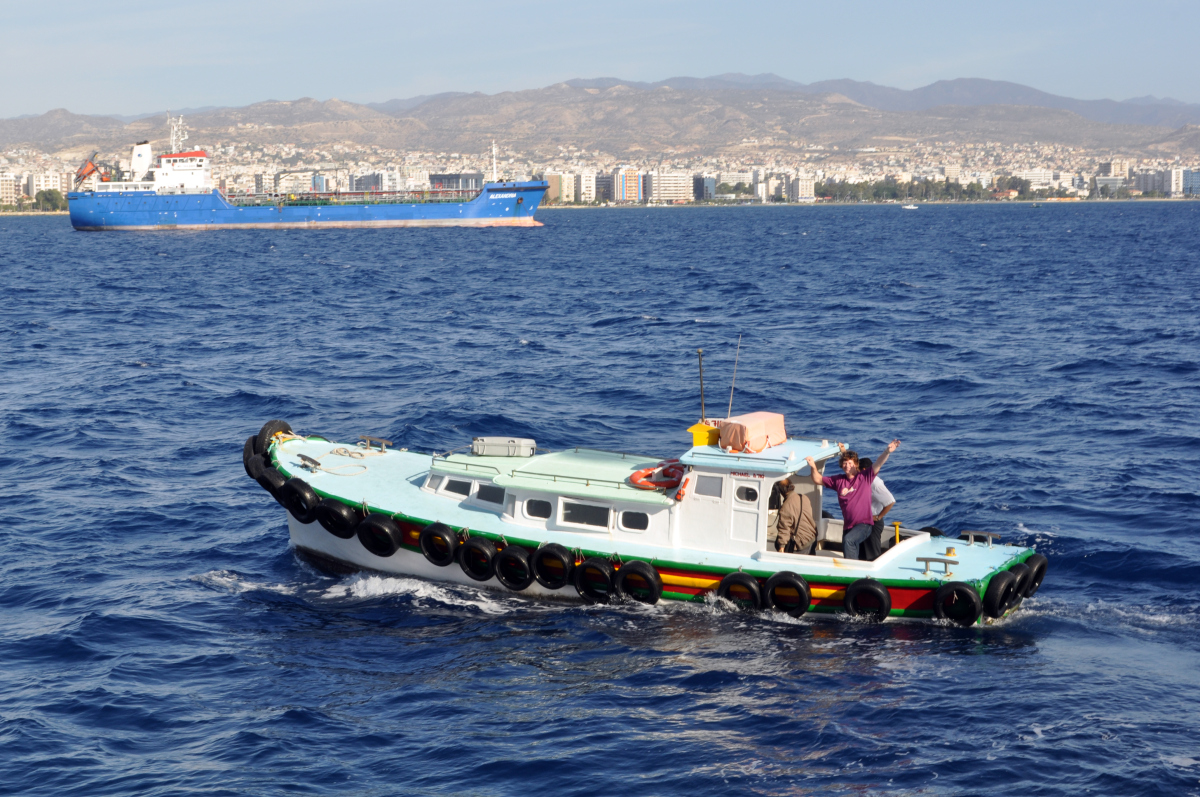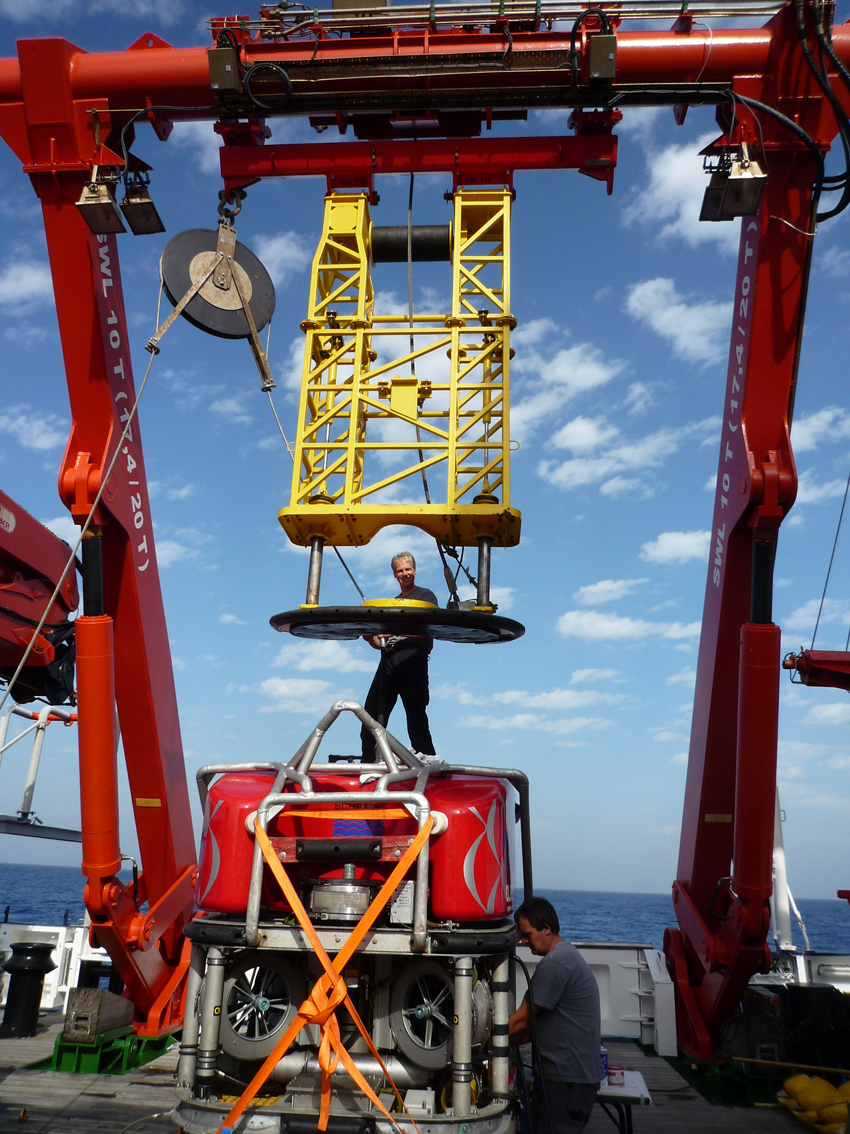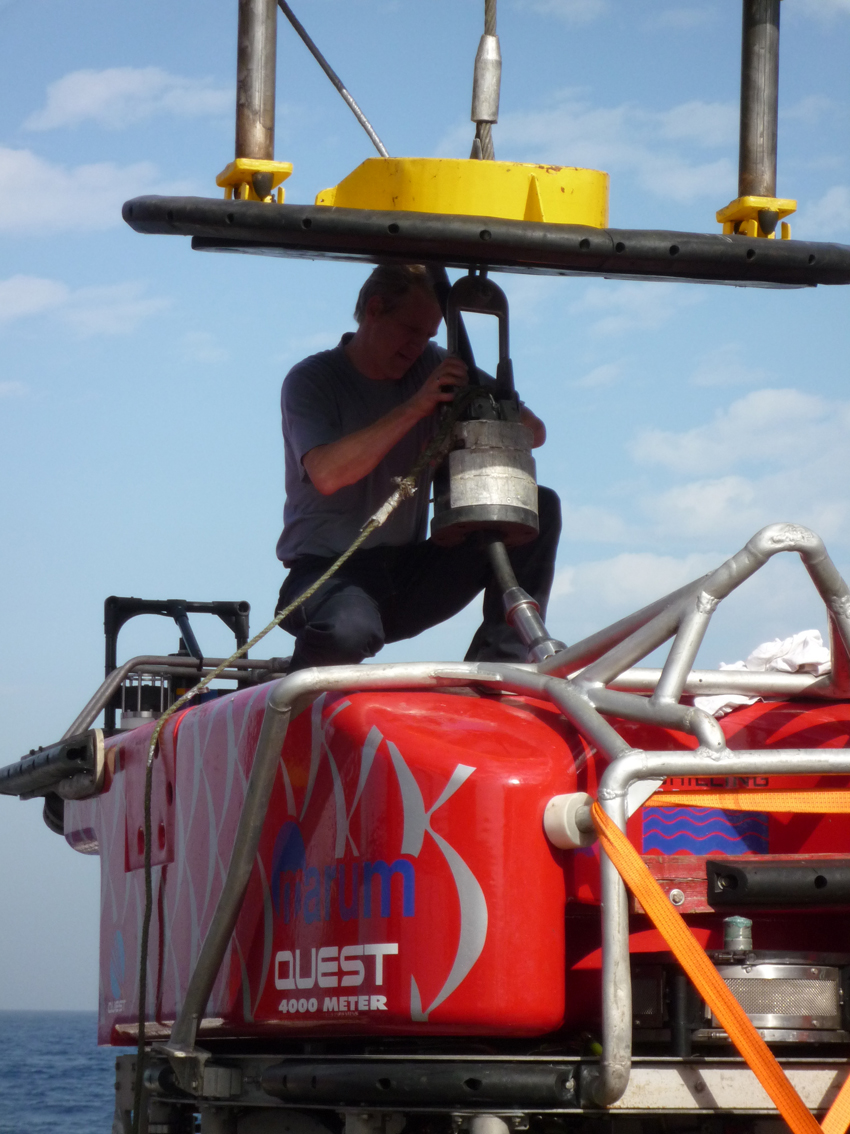Seitenpfad:
Weblog5
Weblog 5
04.11.-07.11
Progress above and below the sea
The sun is shining again! On 4 and 5 November, the weather had improved considerably, and we went for two very successful dives to the southwestern flank of the mud volcano. As described before for the dives to the center on the 1-3 November, it was very exciting to be back and to observe the change since the METEOR expedition BIONIL (M70/2) in 2006.
04.11.-07.11
Progress above and below the sea
The sun is shining again! On 4 and 5 November, the weather had improved considerably, and we went for two very successful dives to the southwestern flank of the mud volcano. As described before for the dives to the center on the 1-3 November, it was very exciting to be back and to observe the change since the METEOR expedition BIONIL (M70/2) in 2006.
Source: Christian Borowski: The weather balloon: Meteorological observations on board MERIAN
Three years before, we had observed an interesting chemosynthetic ecosystem on the southwestern flank of the mud volcano. In this area characterized by a fault system, reduced, sulfidic muds flow out from under pelagic sediments and carbonate crust, to form a ca. 60m long river bed which we termed “sulfur band”. The river bed contained blackish sediments overgrown by granular bacterial mats of giant sulfide oxidizing bacteria. Returning to this site, we found that the river bed was enlarged, and the bacterial mat was completely replaced by another type of filamentous bacteria which appear to float on the sediment. In one part of the sulfur band we observed again denser, turbid fluids on the seafloor. A new flow of blackish sediments was extending along the old river bed, but was not yet populated with microbial life. The most surprising biological change was the enormous growth of giant tubeworms along the edge of the river bed. In 2006 we found two small colonies of tubeworms growing on the blackish muds, extending with their roots into the hard, carbonate bearing seabed. Three years later, the tubeworms have grown by about a meter in some areas, and formed colonies all around the sulfidic muds. It is known that some of the chemosynthetic tubeworms belong to the fastest growing animals on Earth. But it is so amazing when seeing it with our own eyes (through the robot QUEST’s videocameras) that from a sterile-appearing sulfidic subsurface mud, enormous biomasses are produced by the activity of symbiotic sulfide oxidizing bacteria. These are hosted by the tubeworms in a special organ, the so called “trophosome”. The worm grants shelter and energy in the form of sulfide taken up via the roots of the tubeworm, which extend into the reduced sediments. Oxygen is taken up through the gills of the work and delivered to the symbionts via the blood. In return, the symbionts feed their host with sugar-like substances they excrete as a product of CO2-fixation fueled by the energy of sulfide oxidation. But the question is: how do the animals populated new areas, such as the subsurface muds flowing from the flanks of the mud volcano? Some deep sea organisms like the giant tubeworms appear to distribute enough larvae into the ocean waters, that a local change in sulfide availability leads to larval settlement and an enormous growth of populations. We are sampling the benthic fauna of all size classes, from microorganisms (1 µm) to macrofauna (>1 mm) along a spatial gradient from a few meters to hundreds of miles, and we are recovering colonization experiments, which aimed at attracting larvae and juvenile invertebrates. We hope that our work will provide some answers to the distribution of the tubeworm symbionts and larvae, as well as those of other chemosynthetic organisms and associated fauna.
Dive243_0022, Fresh and older mud flows. The blackish sediments represent the newest mud flows, the whitish area is a mat of filamentous bacteria which have overgrown another type of mat present three years ago. We have measured sulfide and oxygen flux with the MPI microprofiler on the new bacterial mat. (Source Marum)
Dive 243_0015, 245_0027, : Chemosynthetic tubeworms everywhere on the sulfidic muds. Three years ago, we found only two small bushes in the whole area. (Source Marum)
PB040140 Sampling for biodiversity analyses – We will compare the spatial patterns of benthic communities associated with sulfidic muds in a joint experiment by MPI, IFREMER, University of Paris 6, Gent and Thessaly. Sectioning the muds are Viola Beier, Gabi Schüssler and Christian Borowski (left to right) Source: Christina Bienhold
Always something to do: work on the robot QUEST. On top of things: Volker Ratmeyer, the ROV teamleader (Source Antje Boetius)
Besides working at excellent weather conditions, the ROV is now in an excellent shape, and we can use all cameras, tools and instruments ….. except one critical payload: the sonar system of QUEST is broken. This instrument is needed to detect targets in distances of 10-100m, so much further away than we can see with the cameras, and it is critical for everyone’s work. Hence, we have decided to steam back to Limassol anchorage to take over another sonar by boat. Luckily, we could get a replacement within 2 days of notice. Now the sonar is working again!
Antje Boetius
Antje Boetius

